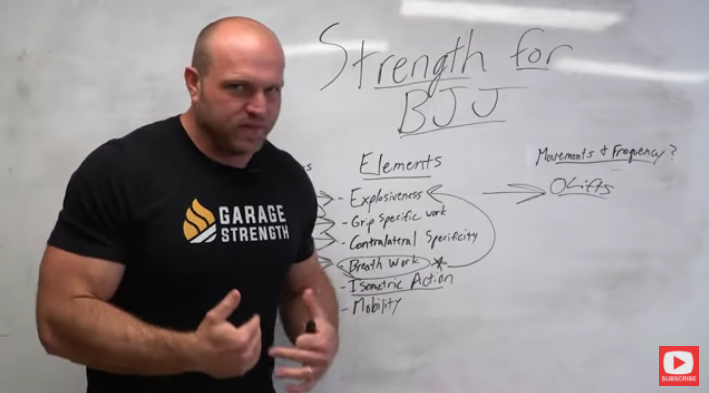Professional Trainer Details The Proper Approach to Strength Training for BJJ
Every jiu-jitsu practitioner wants to be stronger, faster, and more mobile. But how does one go about that? What kind of strength is needed in BJJ, and what’s the best way to train that strength? What movements should grapplers be doing to develop crushing strength and lasting stamina, all without becoming too big and stiff? In a recent video, professional trainer Dane Miller answers all these questions to give grapplers a gameplan to approach their strength and conditioning training.
After describing the three main energy systems used in jiu-jitsu, Miller explains the specific elements at play in grappling as it relates to those energy systems. He lists some elements that seem obvious: explosiveness, grip training, and mobility. But he also points out some elements that many trainers or strength and conditioning programs for BJJ often miss. Those elements are breath work, contralateral specificity (working opposing muscle groups simultaneously), and isometric action (holding positions for a long period of time).
So what movements and exercises should jiu-jitsu players perform to improve their grappling strength? For explosive power, Miller recommends Olympic lifts like power cleans or snatches. For grip specific work, he likes hangs or farmer carries. For contralateral specificity, grapplers should perform lifts that simultaneously work opposing muscle groups. For breathing, study the Wim Hof and/or Rickson Gracie breathe exercises. For isometric strength, grapplers should perform any long hold. And finally, to improve mobility, Miller recommends yoga and full range of motion stretches.
Ultimately, Miller explains that the key to proper strength training for BJJ requires a trainer that understands the elements of grappling and how to plan specific strength plans that focus on those elements.

